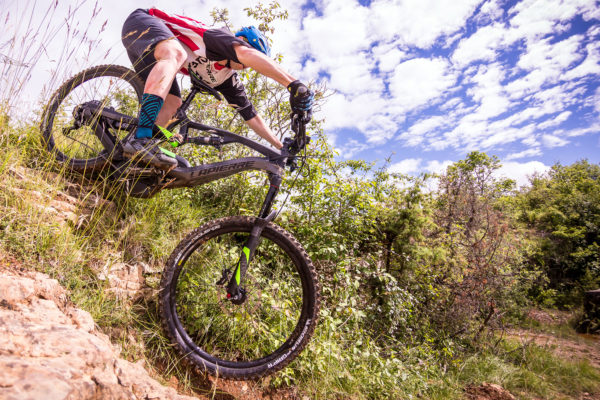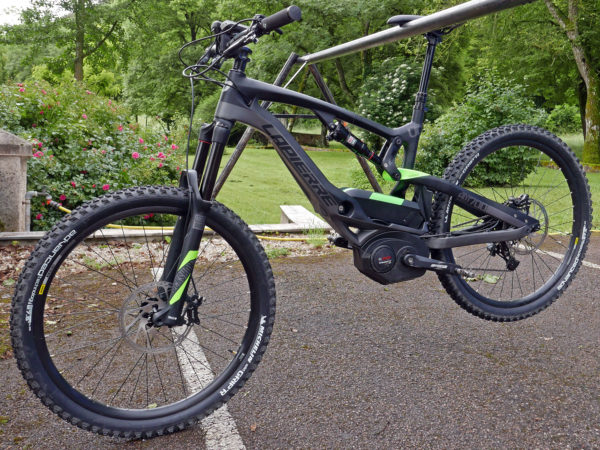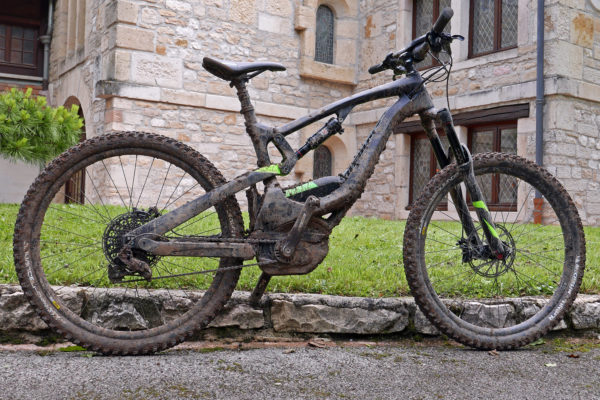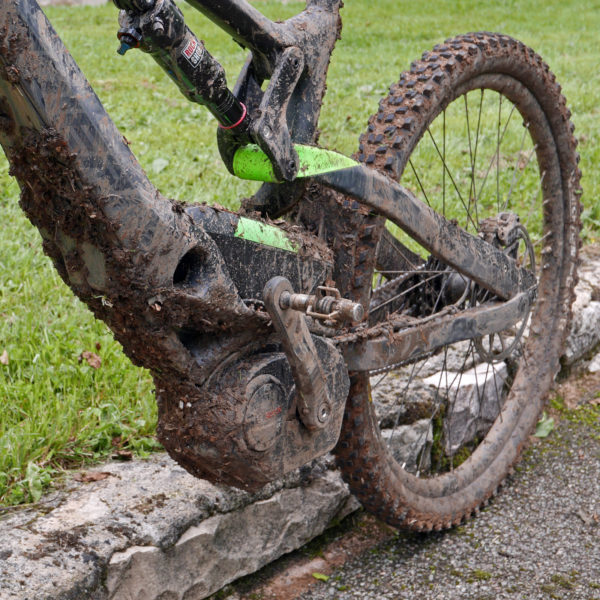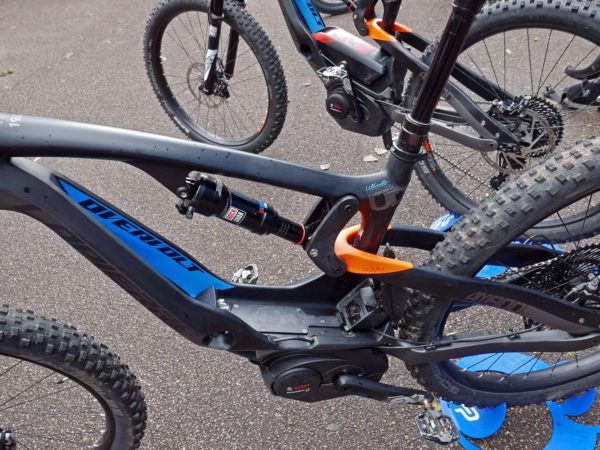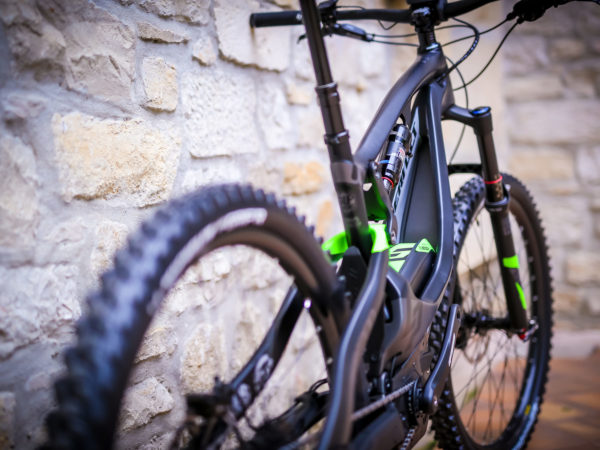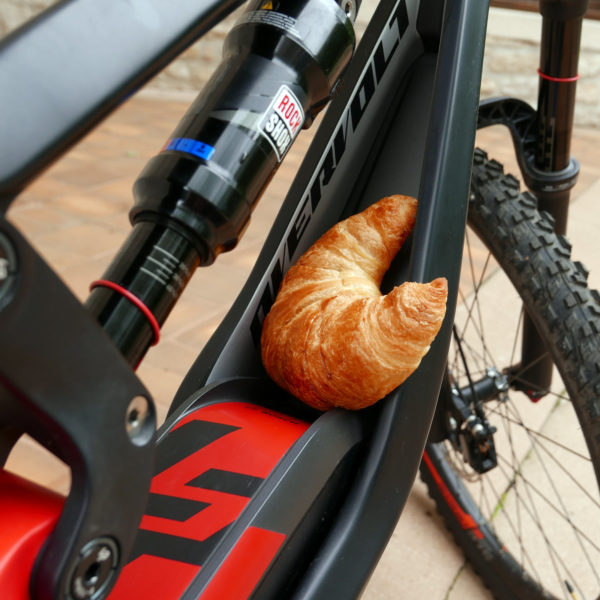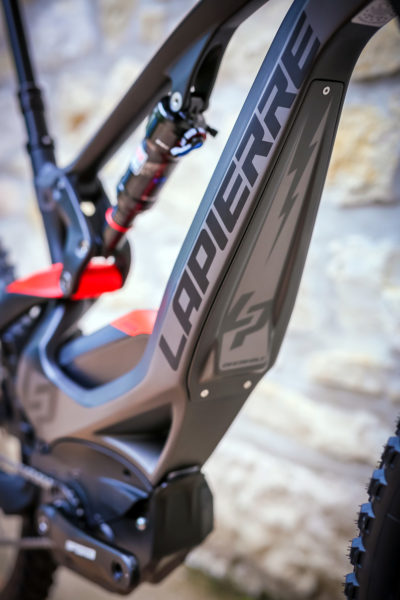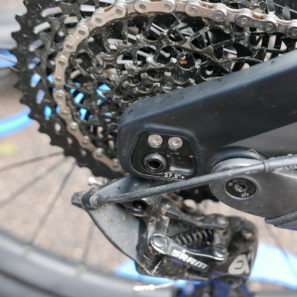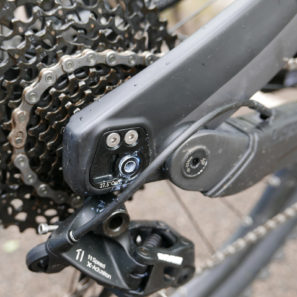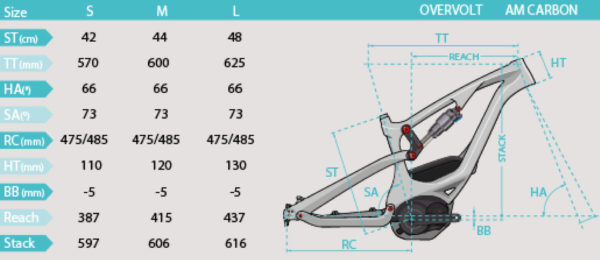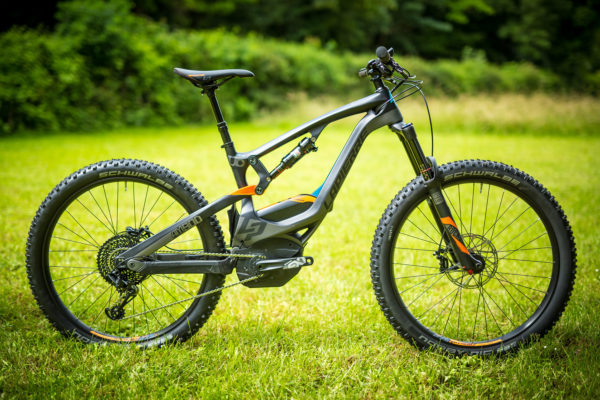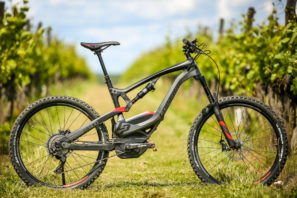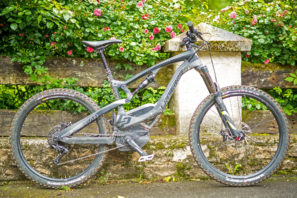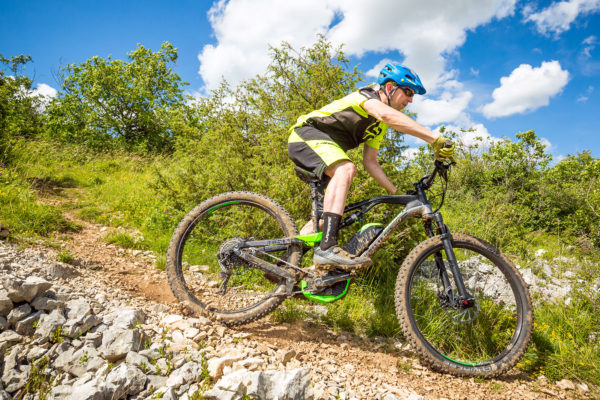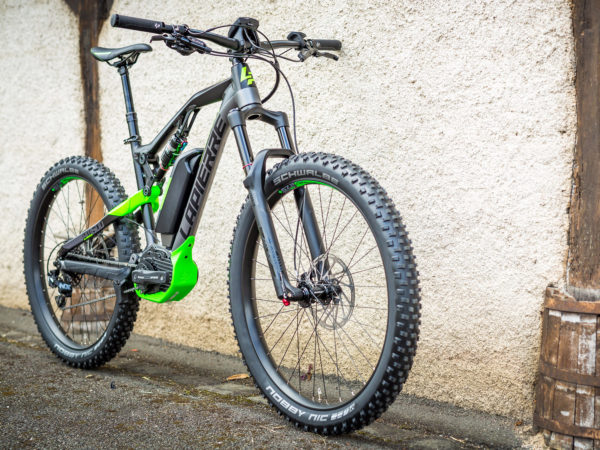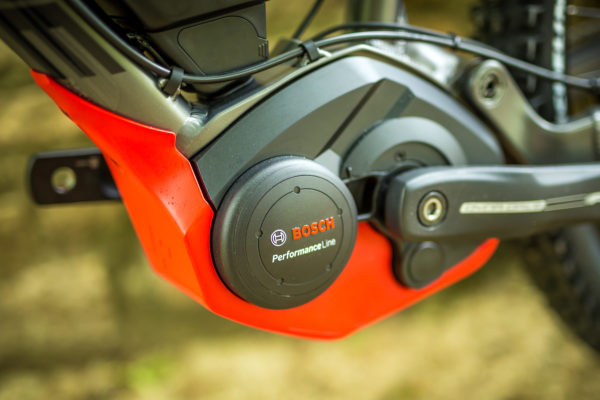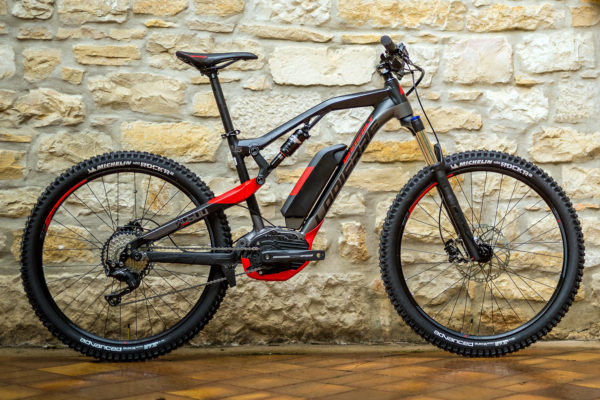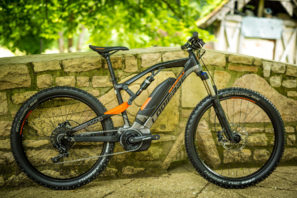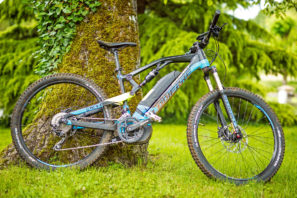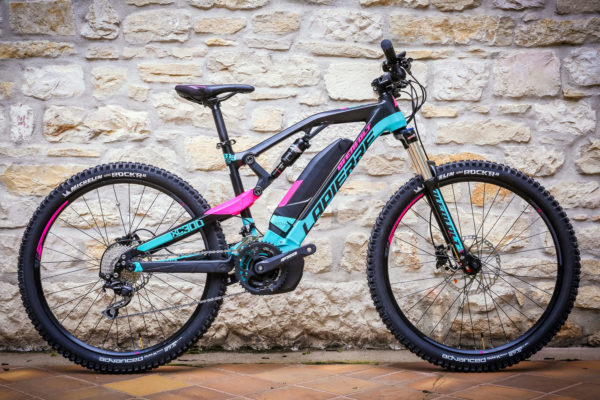We already took a look at Lapierre’s all-new XR cross country rig earlier today, but at the same time as they rolled out that new flagship carbon full suspension mountain bike, they went in the opposite direction with a new trail slaying e-mountain bike as well. Also based on the same OST+ virtual pivot suspension design developed on Lapierre’s enduro Zesty, this new Overvolt AM is a rather unique take on e-bike design. Rather than slapping a motor and battery onto a beefed up trail riding frame like has been done many times before, Lapierre reworked how to get the weight of the drive system back and down to build an all-carbon, all-mountain bike with a low center-of-gravity that their e-Enduro team led by legend Nico Vouilloz could shred down the mountain. Take a look at the Overvolt AM in both carbon and alloy after the break, plus the shorter travel Overvolt XC…
Lapierre is in the unique position of recognizing and acknowledging that e-bikes aren’t an additional market. Lapierre has been one of the first big European companies to develop performance off-road e-MTB bikes and the clearly see that buyers who purchase an e-MTB are buying it instead of another bike, not in addition to another bike. Sure, a lot of e-bike customers are purchasing a second bike, but they are not really adding funds to their budget that wouldn’t perhaps already have been spent on a regular bike purchase.
So to address that concern, Lapierre has put a big investment of time, money, and engineering into developing the kind of e-bike that active mountain bikers will want to ride. That is the over-arching concept behind their Overvolt e-bike range, and it now gets a new top-end bike offering next-level handling, modern trail geometry, and Plus-sized flexibility.
The new e-MTB is the 100% carbon Overvolt AM Carbon. Since pretty much the entire industry is using the same battery and motor suppliers, in order to innovate Lapierre decided to think a bit out of the box on how to incorporate that fixed technology in their bike. The design goal was to try and lower the center of gravity to make the Overvolt bikes as playful and maneuverable as a normal bike. When you realize that 3kg of the 20-25kg of an e-bike is just the battery, there is a lot of rationale to try to get that lower, instead of slapping it on a normal downtube, which makes most e-bikes very front and top heavy and much harder to manage off-road than a regular bike.
So Lapierre moved the battery back 70mm and down another 74mm with their new carbon frame design that cradles the standard Bosch battery. The resulting frame creates a wide two spar, split downtube design that gets a cover that both creates something of an integrated front fender and a semi-enclosed area at the top of the battery that we started calling a croissant pocket (yes, let’s make #croissantpocket trend!), but seriously could be utilized to carry something like a tube and tool pouch with a little SWAT-like integration.
The new carbon frame is also 3400g total, maybe 15-25% less than the previous alloy version and around 600g. But the move to carbon was more about the flexibility of being able to design around a revised center of mass than anything else, and losing weight was really just a benefit.
The new Overvolt AM Carbon can be built up with either 27.5″ or 27.5+ wheels with Lapierre’s new Dual Wheel System of quick swap dropouts that move the rear axle position. In addition to selling the bike in either variant, Lapierre plans to offer a second 275+ eAM wheel kit for just 300€ so buyers can get both setups and choose what they ride based on the trail destination, style, or conditions.
Like the very different new XR cross-country bike, the Overvolt AM Carbon gets Boost spacing, new metric shocks, and the updated OST+ suspension design, this time with 140mm of travel. All bikes ship with 27.5+ forks with 150mm of travel, and all feature a newly developed, stealth-routed Lapierre dropper seatpost and new e-bike specific Lapierre wheels that use wider rims at the front for better tire spread and grip.
The Overvolt AM Carbon will be available in 3 carbon frame models – 900, 800, 700, all with the Bosch CX 500Wh drive unit. The carbon bikes are being produced at Laiperre’s production facility in Dijon, and will be available in three sizes, with the M ready to ship to customers in September, and the S & L in October.
The 6500€ Overvolt AM Carbon 900+ uses SRAM’s new e-bike specific EX1 group with its wide-range 11-48 8-speed cassette and derailleur, and Guide brakes. Suspension is handled by a Rock Shox Pike RC and a Deluxe RT shock. The 6000€ Overvolt AM 800 Carbon gets a 11-speed Shimano rear derailleur and an 11-42T cassette, plus the same suspension and brakes as the 900. The most affordable 5300€ Overvolt AM Carbon is the 700 which uses SRAM’s new low-cost 1×11 NX drivetrain and an 11-42 cassette. It keeps the same shock and brakes as the others, but swaps in a lower-priced Yari RC fork.
On the aluminum front, Lapierre is offering an Overvolt AM Alloy range that shares the same OST+ 140mm/150mm frame/fork travel, 27.5″/27.5+ swappable dropouts and other tech in a more affordable platform that unfortunately use the standard downtube battery placement. For now Lapierre hadn’t been able to get their same back and down battery location sorted in aluminum, but we’re hoping that’s just something temporary.
The AM Alloy will come in 4 complete bikes – the 700, 600 & 500 use the 500Wh Bosch CX motor, get dropper posts and eAM wheels, while the 400 goes with a 400Wh Yamaha and a more budget build.
A new cross-country oriented Overvolt XC Alloy is also on the way offering 27.5″/27.5+ tire flexibility. The OST+ 120/120mm travel bike uses a lot of the same tech as the AM, just pared down for general trail riding. The Overvolt XC Alloy will come in three versions, the 500 with a Bosch CX, and the 400 & 300 with the Yamaha motor.
Lapierre has also added a women specific version of the 120mm travel Overvolt XC 300 W and hardtail HT500 W powered by Yamaha motors. The smaller women’s frames feature shorter seattubes and toptubes for riders down to 155cm tall, plus slightly slacker seat angles, narrower bars, and women-specific saddles, plus special paint schemes.

